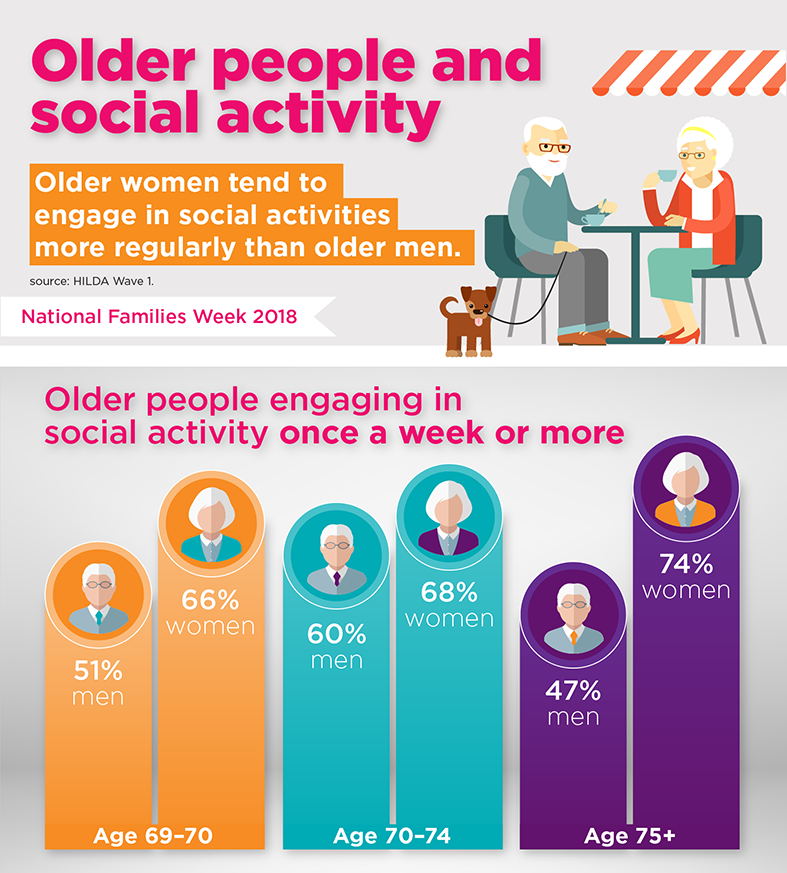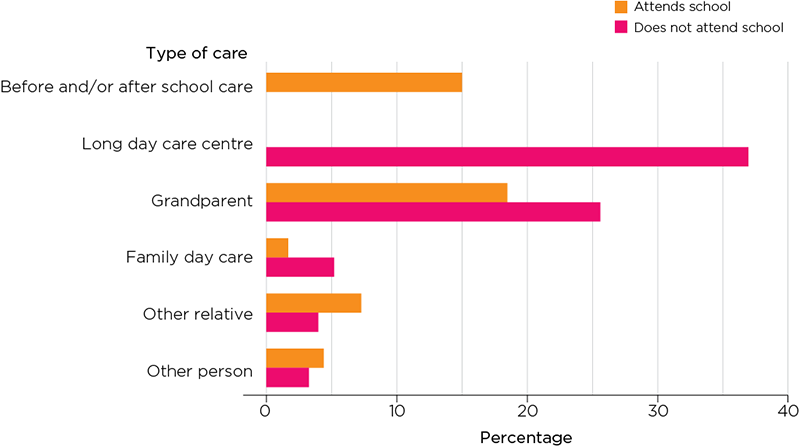Older people
You are in an archived section of the AIFS website
May 2018
The new ‘young old’
In 2016, the proportion of Australians aged 65 and over was 15%. It is expected to rise to 25% by 2056.
In 2013–15, Australian life expectancy at birth was 80.4 years for males and 84.5 years for females (ABS, 2016).
Older Australians are living longer, and this means a new stage of life is emerging between the end of the conventional working age and the onset of old age. These older Australians are remaining productive for longer, working for longer, and continuing to contribute to Australian society. They often lead vibrant, active lives.
Strong social networks are associated with wellbeing in older Australians. Adults who engage in social activities with family and friends are more likely to be in good health. Older adults who engage in physical activities are also healthier.
Generally, females engage in social activities more regularly than males. Women also tend to increase their social activities as they get older, while many men’s social engagement drops off at 75 years and older.

It is important to note that those older people who were more physically active and socially engaged when they were younger people, are also more likely to be active and socially engaged when they get older. We need to start when we are younger because our habits persist.
Older Australians are also strongly engaged in volunteer activities. Nearly one quarter of people aged 65–74 years spend time doing voluntary work (ABS, 2011).
Caring for grandchildren
Older Australians are also providing a vital source of child care in many families.
Apart from parental care, the most common types of care for children under 13 years who attend school are grandparents(18.6%), followed by before/after school care (14.8%).
The most common types of care for children who don't yet attend school are long day care (36.9%) and grandparents (25.8%). Forty per cent of children under three years of age are cared for on a weekly basis by a grandparent. This care often supplements other forms of child care.
Some grandparents reside in the same household with their children and grandchildren. On average, 5% of Australian children are living in a three-generational home with their parent/s and grandparent/s (Baxter & Warren, 2015). This is particularly common among Indigenous and Asian households. These grandparents often provide some child care.
Main type of care attended by children aged 0–12 years

Source: ABS (2017) Childhood Education and Care, Australia, June 2017
References
Australian Bureau of Statistics (ABS). (2017). Life Tables, States, Territories and Australia, 2014–2016 (Catalogue no. 3302.0.55.001). Canberra: ABS.
Baxter, J., & Warren, D. (2015). Grandparents in their young grandchildren’s lives. In Australian Institute of Family Studies (Ed.), The Longitudinal Study of Australian Children Annual Statistical Report 2015 (pp. 13–40). Melbourne: AIFS.